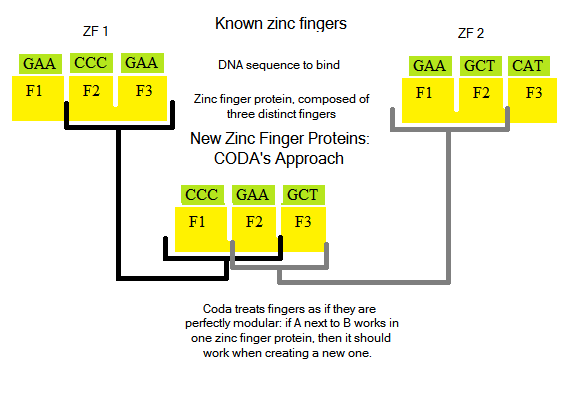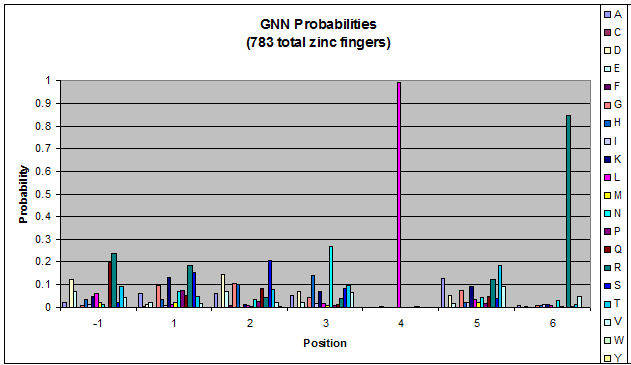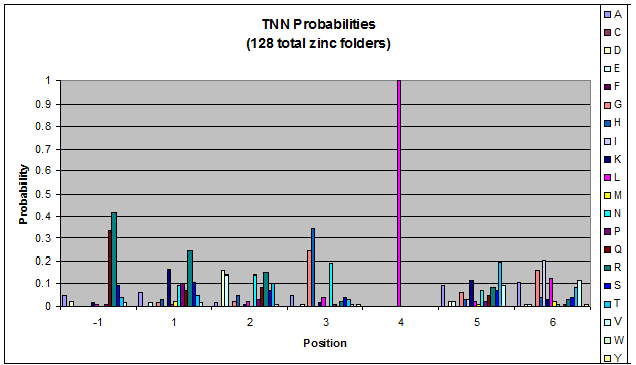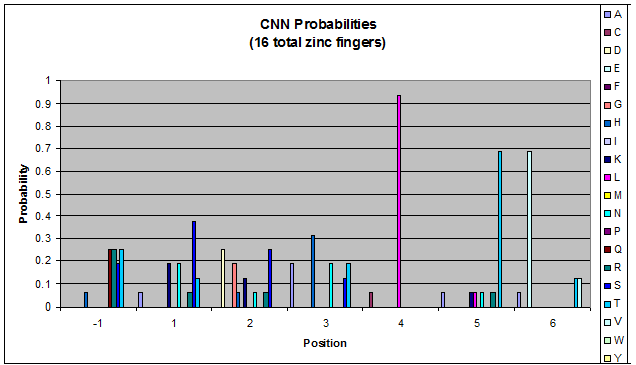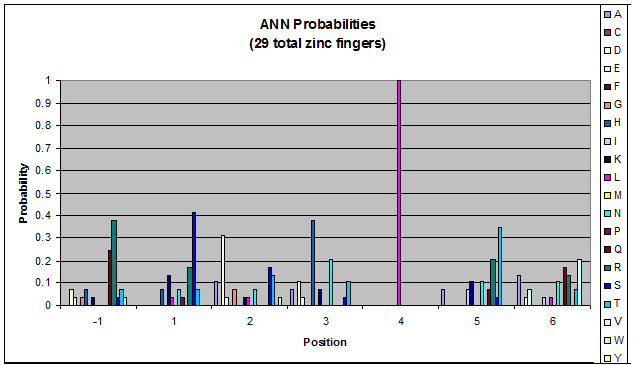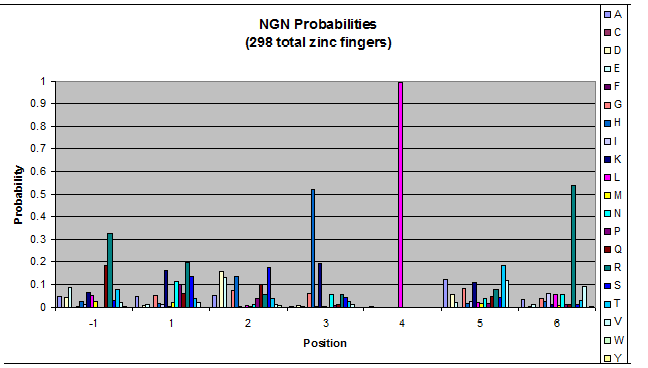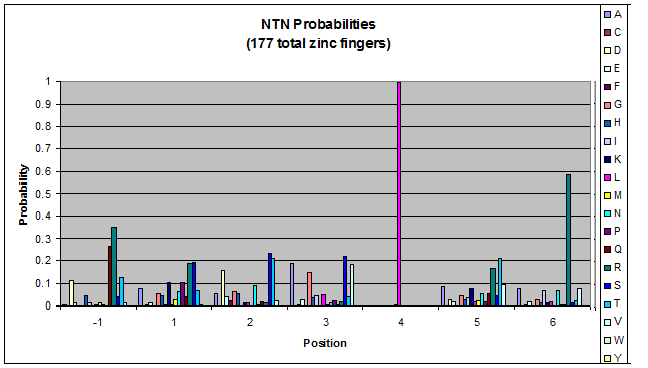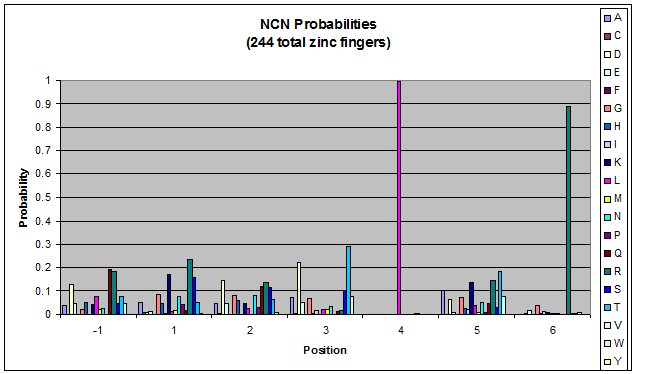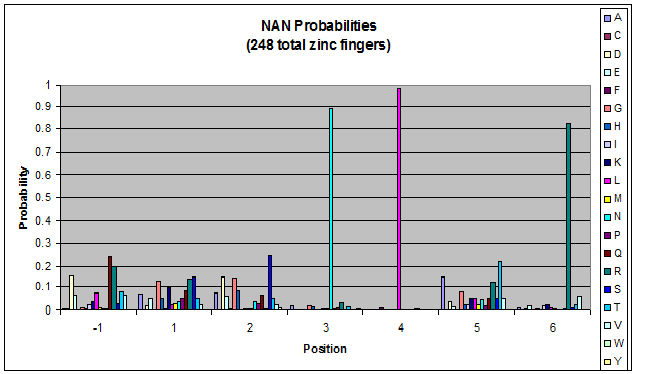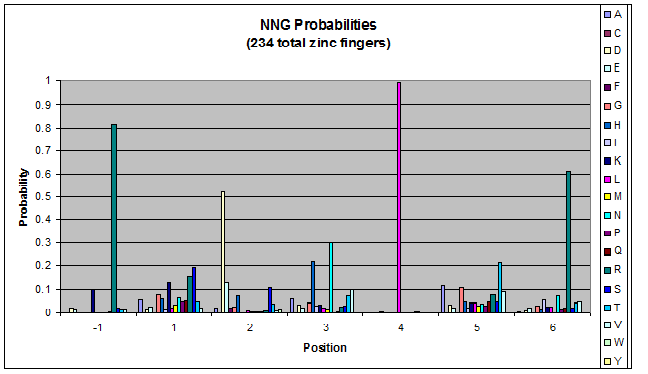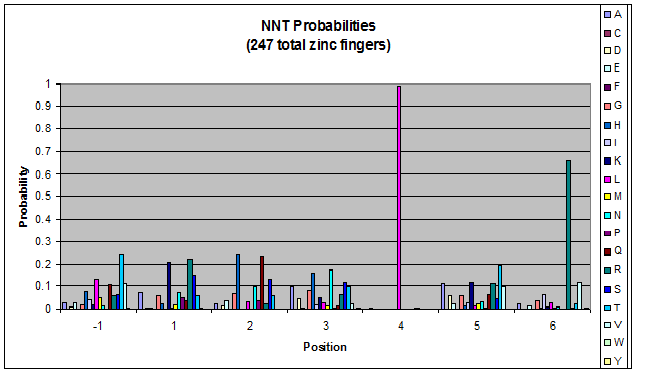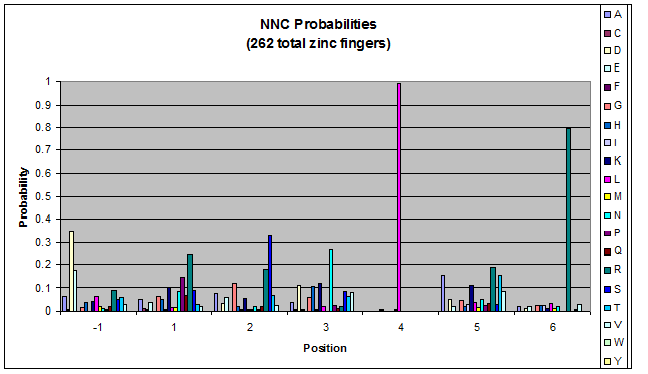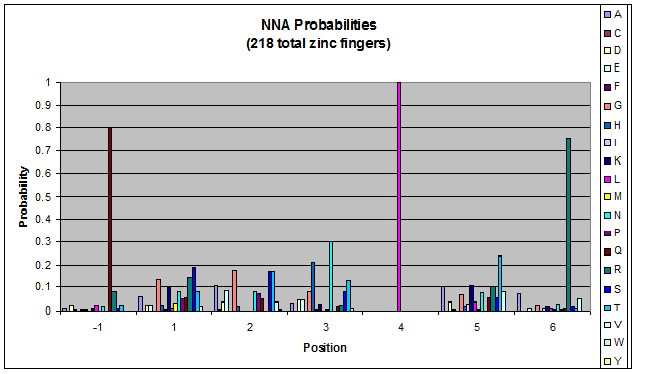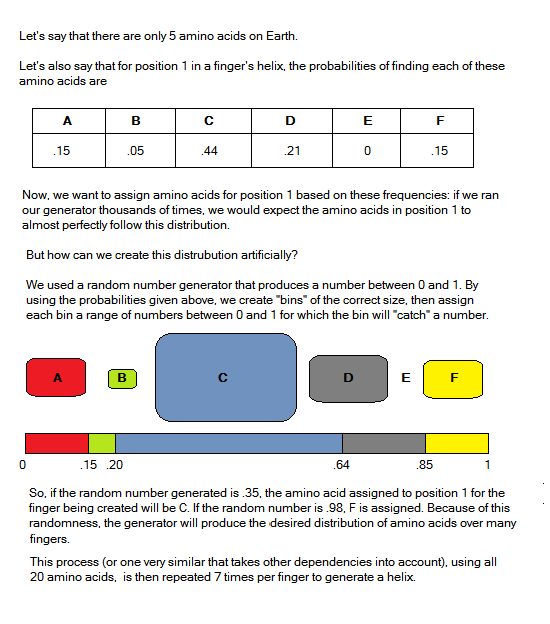Team:Harvard/Bioinformatics
From 2011.igem.org
(→Probabilities and Randomization) |
(→Our Approach) |
||
| Line 28: | Line 28: | ||
We analyzed this dataset for frequency (how often a given amino acid appears in a given position in the helix) and pairing (if amino acid A is in position 1, how often is amino acid B next to it). | We analyzed this dataset for frequency (how often a given amino acid appears in a given position in the helix) and pairing (if amino acid A is in position 1, how often is amino acid B next to it). | ||
| - | |||
| - | |||
| - | |||
| - | |||
| - | |||
| - | |||
| - | |||
| - | |||
| - | |||
| - | |||
===Helix Dependencies=== | ===Helix Dependencies=== | ||
| Line 76: | Line 66: | ||
Because there is not much data for 'CNN' and 'ANN' sequences (with 16 and 29 known fingers that bind to each triplet, respectively), we should use pseudocounts for these sequences, so that our frequency generator is not too biased toward probabilities that may not be significant. | Because there is not much data for 'CNN' and 'ANN' sequences (with 16 and 29 known fingers that bind to each triplet, respectively), we should use pseudocounts for these sequences, so that our frequency generator is not too biased toward probabilities that may not be significant. | ||
| + | |||
| + | |||
| + | Our generation program turns these frequencies into probabilities that position X contains amino acid X, given what triplet we are trying to bind. | ||
| + | |||
| + | ==Programming== | ||
| + | |||
| + | ===Probabilities and Randomization=== | ||
| + | |||
| + | See the image [[File:HARVBins.png|thumb]] at right for a more through explanation. | ||
| + | |||
</div> | </div> | ||
Revision as of 17:15, 10 August 2011
Contents |
Terminology
- Backbone: contains most of the amino acids of a zinc finger protein: zif268 is the most famous backbone.
- Fingers: contain a backbone and a helix, bind to a 3-base DNA triplet
- Helix: the alpha helix in a finger. It is responsible for binding to a DNA triplet. Helices are made up of 7 amino acids, and fit into a specified position in a backbone.
- Zinc finger proteins (ZFPs): arrays of three fingers that bind to 9 bases (3 triplets) of DNA.
[Diagram]
Past Zinc Finger Designers
Designing new zinc finger proteins (ZFPs, which are arrays of three fingers) is not an easy task: how they bind and interact with DNA bases is not fully understood, and is an active area of research [Persikov]. Notable past attempts to create novel ZFPs [CODA, OPEN] tried a two distinct methods: CODA took a modular approachOPEN took two known fingers from an array, and randomized protein sequences to try to generate a third finger to bind a new triplet:
Both techniques were successful in finding ZFPs to bind to novel DNA sequences [how successful?]
Our Approach
Improving on the concept of OPEN, we decided to design ZFPs where the first two DNA triplets can be bound, but the third cannot. For example, if the sequence GTG GGA CCA can be bound but GTG GGA TGG cannot, we would use the first two fingers and generate the third. OPEN simply randomized amino acid sequences to try to create a third finger: we wrote software that uses data from known fingers to "intelligently" generate new fingers.
Data and Analysis
OPEN provided us with a spreadsheet of ZFPs produced by their research. Anton Persikov, during his own ZFP research, has compiled a database of ZFPs from studies from 1980-2005 which he shared with us.
From these two datasets, we distilled over [3000] unique ZFPs which contained approximately [1400] unique fingers.
We analyzed this dataset for frequency (how often a given amino acid appears in a given position in the helix) and pairing (if amino acid A is in position 1, how often is amino acid B next to it).
Helix Dependencies
Probability data
- The following are graphs of the probability of finding each amino acid at each position on the alpha helix.
Identifying Dependencies
We looked at the probability graphs to determine which amino acid positions on the finger's helix interact with which bases. Some interactions are fairly well estabilished, while others have been more recently proposed [Persikov]
To identify these interactions in our own data we looked at which helix positions varied most when you changed the bases. A more rigorous way to do this is to calculate the entropy change as you change the amino acids in each position.
- xNN(Vary base 1): Amino acid 6 changes
- NxN(Vary base 2): Amino acid 3 changes
- NNx(Vary base 3): Amino acid -1 and 2(?) changes
Our program looks at dependencies between amino acids when generating sequences.
We decided on these amino acid dependencies, using both established data and patterns we saw in the OPEN data:
- -1 and 2
- 2 and 1
- 6 and 5
Because there is not much data for 'CNN' and 'ANN' sequences (with 16 and 29 known fingers that bind to each triplet, respectively), we should use pseudocounts for these sequences, so that our frequency generator is not too biased toward probabilities that may not be significant.
Our generation program turns these frequencies into probabilities that position X contains amino acid X, given what triplet we are trying to bind.
Programming
Probabilities and Randomization
See the image at right for a more through explanation.
 "
"









